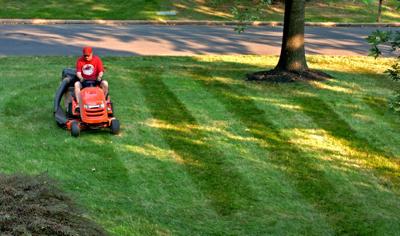Garden columnist Dan Gill answers readers' questions each week. To send a question, email Gill at dgill@agcenter.lsu.edu.
My satsumas look awful this year. About 70% of the fruit on my tree has turned ugly rust brown. Is it a fungus? Is the discolored fruit OK to eat? Susan
Fruit with a dark brown discoloration on the skin have been attacked by citrus rust mites. Citrus rust mites, too tiny to be seen with the naked eye, generally just damage the skin. Fruit will often ripen normally, perhaps smaller, with the pulp and juice still good to eat. So, the damage is mostly cosmetic.
It would be unacceptable to a commercial citrus grower — consumers do not like blemished fruit. But, for a home gardener this damage is not all that significant — the fruit are perfectly good to eat.
That means that control efforts are optional, and would be mostly done to keep the fruit looking more attractive. If you would like to minimize the damage next year, spray the tree with a light horticultural oil (Year Round Spray Oil, All Seasons Spray Oil) at the first sign of damage on the green fruit in summer.
If you want to spray preventively, spray once a month in early June, early July and early August.
Should I apply Scotts Turf Builder Winter Guard Fall Lawn Food to my lawn? If yes, when should I put it down. My wife and I listen to your program on WWL radio every Saturday morning. Thanks for your help. Russell Laurent
No, those lawn fertilizers are formulated for Northern grasses. Here in the Deep South the lawn grasses we use (St. Augustine, centipede, zoysia and Bermuda) should not be fertilized after the beginning of September.
The next time you will apply fertilizer to your lawn is the last week of March next year.
My satsuma tree has satsumas that are partially rotten. Some have dark spots on the outside and some don’t. However, after peeling, they have a portion that is rotten. This tree is 12 years old and I have never had this problem. Charles
Rotten fruit should be removed (or collected if fallen) and disposed of. There is nothing you can do about them at this point. There is nothing you can do about fruit that have rotten portions when peeled. These are just losses you have to accept this year.
Controlling fungal diseases that cause fruit rot is done in the spring. Next year, spray the tree with a copper fungicide (Liquid Copper, Copper Fungicide and other brands) as soon as it finishes flowering. Spray the tree again a couple of weeks later and make a final application a couple of weeks after that.
I planted some evergreens that have been trained into a spiral shape. I need to know how to maintain this shape by pruning. Janet.
Maintaining specially trained topiaries properly is important. These plants take a lot of labor to produce and are not cheap. Allowed to grow unchecked, they can quickly get out of shape.
The major work is already done on your spiral evergreens — the desired shape has been created. All you have to do now is prune regularly, as needed, to maintain the shape the plants had when you purchased them.
The pruning should be continual. Check the plants every couple of weeks during the growing season, and do a little trimming here and there as needed. But, it’s really mostly a matter of maintenance, like mowing a lawn.
It involves maintaining the spiral evergreens in the desired shape with regular, constant pruning — like maintaining a lawn at a desired height requires regular, constant mowing.

Calendula can be planted from seeds now.
Garden tips
FLOWER SEEDS: You can direct seed poppies, larkspur, sweet pea, calendula, alyssum, bachelor’s button and Virginia stock now.
CITRUS PESTS: Birds will peck on the fruit of citrus trees as they begin to ripen. The damage looks like an ice pick was driven repeatedly into the skin of the fruit, causing blemishes, often in patches. If you see this occurring, you can prevent additional damage by covering your tree with bird netting.
BULB TIME: November through early December is the time to plant spring-flowering bulbs, such as allium, anemone, calla lily*, crocus, daffodil*, Dutch iris*, grape hyacinth, leucojum*, lilies* (Easter lily, Asiatic lily and others), narcissus*, ornithogalum*, Peruvian scilla*, ranunculus, Spanish bluebell*, sparaxis and spring star flower* (those marked * will generally rebloom for many years).
DIVVY UP: Dig, divide and transplant perennials such as day lilies, ajuga, daisy, rudbeckia, coreopsis, yarrow and others now through February. If you do it now, keep newly divided plants well-watered should the weather continue to be dry.



